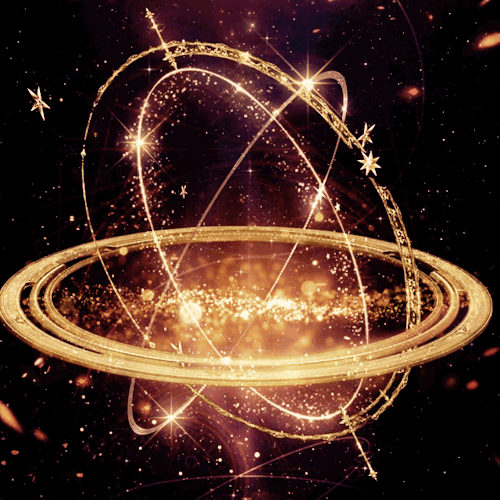💜Stars Life 💜






💜Stars Life 💜
More Posts from Koba-san and Others








"If You Truly Love Nature, You Will Find Beauty Everywhere." 🥰❤️💙🌸🌺💐🌈

Milky way over Aragi island rice terraces.
Wakayama, Japan.


Chestnut tiger butterfly.
Kyoto, Japan.

Power! Commission for @makotosniijimas on twitter!










~2nd trial is killing me~


Coronal mass ejection
A coronal mass ejection (CME) is a significant release of plasma and magnetic field from the solar corona. They often follow solar flares and are normally present during a solar prominence eruption. The plasma is released into the solar wind, and can be observed in coronagraph imagery.
Coronal mass ejections are often associated with other forms of solar activity, but a broadly accepted theoretical understanding of these relationships has not been established. CMEs most often originate from active regions on the Sun’s surface, such as groupings of sunspots associated with frequent flares. Near solar maxima, the Sun produces about three CMEs every day, whereas near solar minima, there is about one CME every five days.

Coronal mass ejections release large quantities of matter and electromagnetic radiation into space above the Sun’s surface, either near the corona (sometimes called a solar prominence), or farther into the planetary system, or beyond (interplanetary CME). The ejected material is a magnetized plasma consisting primarily of electrons and protons. While solar flares are very fast (being electromagnetic radiation), CMEs are relatively slow.
Coronal mass ejections are associated with enormous changes and disturbances in the coronal magnetic field. They are usually observed with a white-light coronagraph.
Impact on Earth
When the ejection is directed towards Earth and reaches it as an interplanetary CME (ICME), the shock wave of traveling mass causes a geomagnetic storm that may disrupt Earth’s magnetosphere, compressing it on the day side and extending the night-side magnetic tail. When the magnetosphere reconnects on the nightside, it releases power on the order of terawatt scale, which is directed back toward Earth’s upper atmosphere.

Solar energetic particles can cause particularly strong aurorae in large regions around Earth’s magnetic poles. These are also known as the Northern Lights (aurora borealis) in the northern hemisphere, and the Southern Lights (aurora australis) in the southern hemisphere.

Coronal mass ejections, along with solar flares of other origin, can disrupt radio transmissions and cause damage to satellites and electrical transmission line facilities, resulting in potentially massive and long-lasting power outages.
To learn more, click here.
Image credit: Alex Conu
Animation: Science Channel & NASA/Goddard
-
 astralluna-xx reblogged this · 1 month ago
astralluna-xx reblogged this · 1 month ago -
 kuropatochkaa liked this · 1 month ago
kuropatochkaa liked this · 1 month ago -
 elisadevelon reblogged this · 1 month ago
elisadevelon reblogged this · 1 month ago -
 innerpartydonutpaper liked this · 1 month ago
innerpartydonutpaper liked this · 1 month ago -
 queerhistorymajor reblogged this · 1 month ago
queerhistorymajor reblogged this · 1 month ago -
 avundeyes reblogged this · 1 month ago
avundeyes reblogged this · 1 month ago -
 blackeyedthorn liked this · 1 month ago
blackeyedthorn liked this · 1 month ago -
 xigua123321 liked this · 2 months ago
xigua123321 liked this · 2 months ago -
 axolotlnoise reblogged this · 3 months ago
axolotlnoise reblogged this · 3 months ago -
 notthisvirgin liked this · 3 months ago
notthisvirgin liked this · 3 months ago -
 vasilisaprekrasnaja reblogged this · 3 months ago
vasilisaprekrasnaja reblogged this · 3 months ago -
 axolotlnoise reblogged this · 3 months ago
axolotlnoise reblogged this · 3 months ago -
 visoreyes liked this · 3 months ago
visoreyes liked this · 3 months ago -
 visoreyes reblogged this · 3 months ago
visoreyes reblogged this · 3 months ago -
 pisceandarling liked this · 3 months ago
pisceandarling liked this · 3 months ago -
 trii18 liked this · 3 months ago
trii18 liked this · 3 months ago -
 jojoscampthoughts liked this · 4 months ago
jojoscampthoughts liked this · 4 months ago -
 chaotiqueoccurrence liked this · 4 months ago
chaotiqueoccurrence liked this · 4 months ago -
 starlins-world liked this · 4 months ago
starlins-world liked this · 4 months ago -
 wingardiuma liked this · 4 months ago
wingardiuma liked this · 4 months ago -
 saturns-spacecupid reblogged this · 4 months ago
saturns-spacecupid reblogged this · 4 months ago -
 shadowron reblogged this · 5 months ago
shadowron reblogged this · 5 months ago -
 nerd-curator reblogged this · 5 months ago
nerd-curator reblogged this · 5 months ago -
 enlightened-aide reblogged this · 5 months ago
enlightened-aide reblogged this · 5 months ago -
 ratitaazulada liked this · 5 months ago
ratitaazulada liked this · 5 months ago -
 unicorncake17 liked this · 5 months ago
unicorncake17 liked this · 5 months ago -
 shantalangel reblogged this · 5 months ago
shantalangel reblogged this · 5 months ago -
 selfkaiharness liked this · 5 months ago
selfkaiharness liked this · 5 months ago -
 champiionic reblogged this · 5 months ago
champiionic reblogged this · 5 months ago -
 hollowcportcresources reblogged this · 5 months ago
hollowcportcresources reblogged this · 5 months ago -
 sonxofxapollo reblogged this · 5 months ago
sonxofxapollo reblogged this · 5 months ago -
 cataradical liked this · 5 months ago
cataradical liked this · 5 months ago -
 partyhardwoohoo reblogged this · 5 months ago
partyhardwoohoo reblogged this · 5 months ago -
 breccagref liked this · 5 months ago
breccagref liked this · 5 months ago -
 murdockdevil---moved liked this · 5 months ago
murdockdevil---moved liked this · 5 months ago -
 oftamriels reblogged this · 5 months ago
oftamriels reblogged this · 5 months ago -
 meadow-hearthfire liked this · 6 months ago
meadow-hearthfire liked this · 6 months ago -
 faynbret reblogged this · 6 months ago
faynbret reblogged this · 6 months ago -
 nubideluna liked this · 6 months ago
nubideluna liked this · 6 months ago -
 lightofearendil liked this · 6 months ago
lightofearendil liked this · 6 months ago -
 valfredes reblogged this · 7 months ago
valfredes reblogged this · 7 months ago -
 annazscru liked this · 7 months ago
annazscru liked this · 7 months ago




